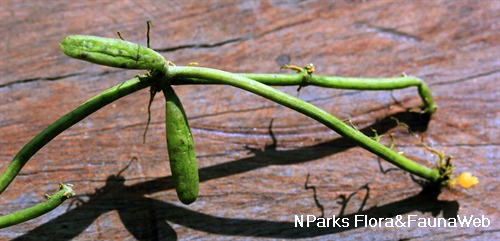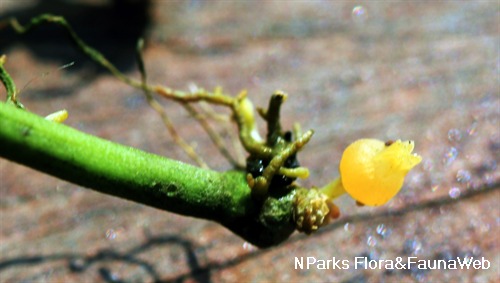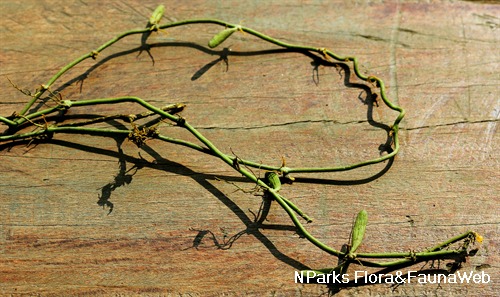
Name
Classifications and Characteristics
| Plant Growth Form | Climber, Epiphyte |
|---|---|
| Lifespan (in Singapore) | Perennial |
Biogeography
| Native Distribution | Bangladesh, Indian subcontinent - Tropical Asia |
|---|---|
| Native Habitat | Terrestrial |
| Preferred Climate Zone | Tropical |
| Local Conservation Status | Native to Singapore (Critically Endangered (CR)) |
Description and Ethnobotany
| Growth Form | Slender creeping vine with succulent stems |
|---|---|
| Foliage | Leaves succulent, dull light green, linear - narrowly oblong, to 4cm long by 0.5cm wide. |
| Flowers | Flowers very pale cream - dull yellow, urceolate, to 0.25cm long by 0.3cm wide |
| Etymology | The species is named after the region of Bengal, from which the specimen was first collected (Type specimen was collected from Sylhet, which is now pary of North Eastern Bangladesh) . |
Landscaping Features
| Desirable Plant Features | Ornamental Form |
|---|---|
| Landscape Uses | Parks & Gardens, Small Gardens, Interiorscape/ Indoor Plant, Container Planting, Suitable for Hanging Baskets |
| Usage Hazard - Cons | Toxic Upon Ingestion |
| Usage Hazard - Cons Remarks | Avoid contact with milky/ white sap as it may cause skin irritation in certain individuals. Keep plants away from children and pets as sap could be toxic. |
Fauna, Pollination and Dispersal
| Pollination Method(s) | Biotic (Fauna) |
|---|
Plant Care and Propagation
| Light Preference | Full Sun, Semi-Shade |
|---|---|
| Water Preference | Moderate Water, Occasional Misting |
| Pest(s) | Sucking Insects |
| Propagation Method | Stem Cutting |
Foliar
| Foliage Retention | Evergreen |
|---|---|
| Mature Foliage Colour(s) | Green, Green - Light Green |
| Mature Foliage Texture(s) | Thick |
Image Repository
Others
| Master ID | 31444 |
|---|---|
| Species ID | 5841 |
| Flora Disclaimer | The information in this website has been compiled from reliable sources, such as reference works on medicinal plants. It is not a substitute for medical advice or treatment and NParks does not purport to provide any medical advice. Readers should always consult his/her physician before using or consuming a plant for medicinal purposes. |





_-pauline_tay.jpg)
